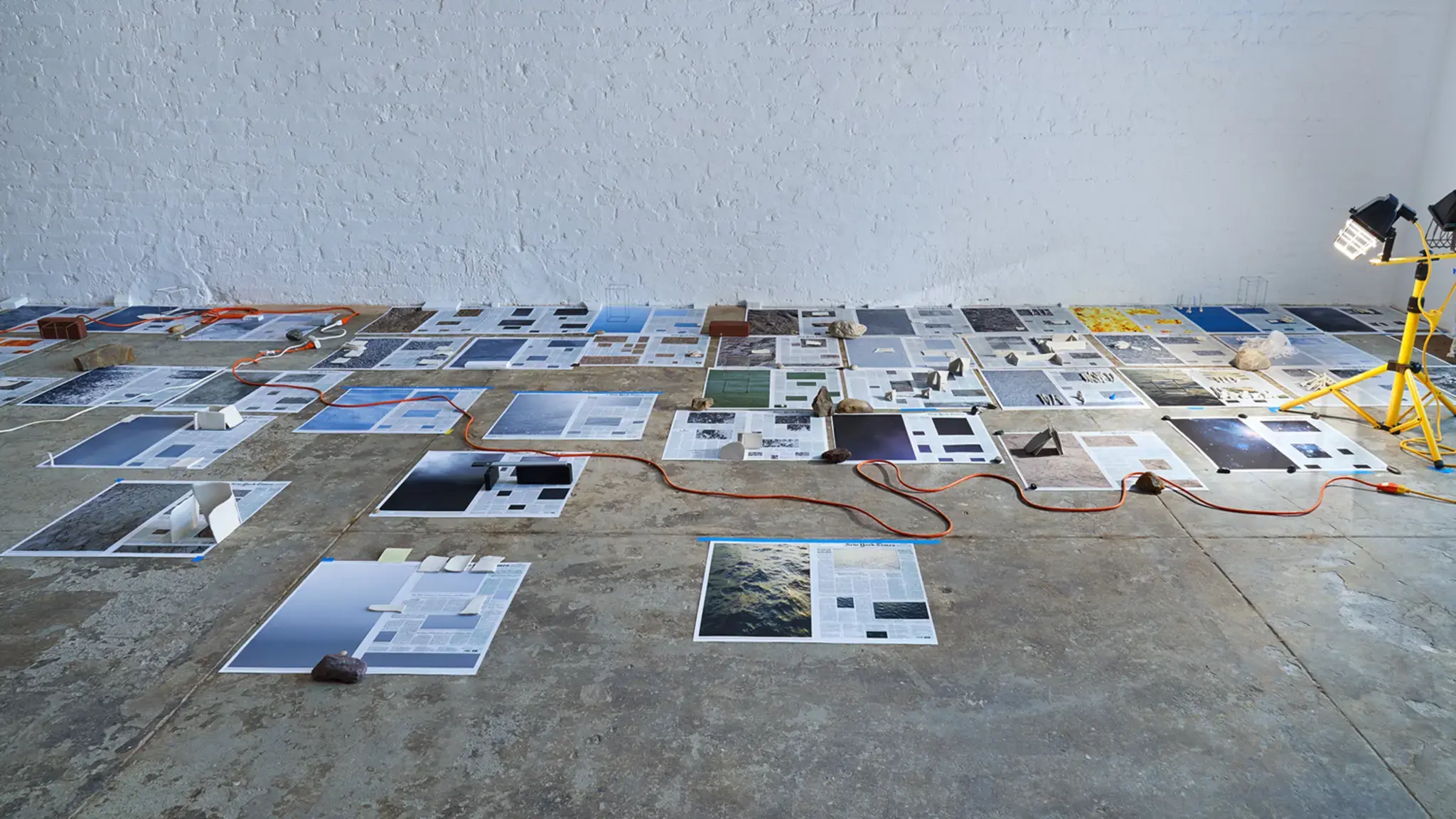

Sarah Sze’s current solo exhibition at the Fabric Workshop and Museum (FWM) is a culmination of a two-year Center-funded residency spent working within the institution’s unique gallery spaces. Widely known for her intricate, site-specific installations—on view most recently at the 2013 Venice Biennale—Sze’s works at FWM create an unfolding narrative that allows visitors to experience her reflections on time, her explorations of movement, and investigations of material.
FWM’s upcoming exhibition catalog features an essay by the late art critic and philosopher Arthur C. Danto, written in 2011, two years prior to his passing. In his text, posted here with the permission of FWM, Danto looks back on the “remarkable progress” of Sze’s artistic practice and the “entirely exciting” direction he foresaw in her future.
From the essay:
Since a central dimension of critical analysis consists in finding out what a work of art means, there is nothing more useful to critics than talking with the artist about what she meant. Thus I cherish the conversations with artists whose work I have agreed to write about. Though rarely, it sometimes goes the other way: the artist is struck by something said by a critic that she had not taken into consideration. This happened in my first major conversation with Sarah Sze in 2005. We were talking about models, and I mentioned a distinction between artistic and scientific models, since a work of hers seemed to me to look like a scientific representation. That, she subsequently told me, opened up vistas for her, and indeed helped define the work she has done since. Oddly, I don’t find it referred to in the essay I wrote about her art. That may, thinking about it, be entirely natural. As a critic, my task was to deal with a body of work that already existed. Her concern, as an artist, was to feel her way into the future, into art that had yet to be imagined. It would, if my distinction were on the mark, be art that was more than art. It would be art that did something or made something happen. Of course art frequently makes something happen. But that depends upon the mind of the viewer. Scientific models map what will happen in the world itself, all going well.
Sze’s work, with its wiry armatures, sometimes looks like a scientific model. I was thinking of her 1999 installation at the Fondation Cartier pour l’Art contemporain in Paris, Everything that Rises Must Converge; its stepladders filled the entirety of a large space, as if it was a work in progress where the scientists had to find ways to get around the network. It had to be large in order to represent, as a model, a complex piece of reality. My sense of artistic models arose from the marvelous Renaissance models architects constructed to show what a building was going to look like, the way that Donato Bramante fashioned in wood what would ultimately become the Tempietto in Rome. I assume that there was a short list of architects invited to submit a model, the maker of which would build it if chosen. Or the patron would ask for changes that could first be worked in to the model. There would have been, naturally, issues of taste, which became fundamental in aesthetic theory in the eighteenth century, whereas aesthetics was secondary in scientific models. Thus the mathematician and astrologer Johannes Kepler was deeply unhappy that planets swung in elliptical orbits around the sun in his model of the solar system, based on observations by astronomer Tycho Brahe. Kepler would have wished that the orbits were circular: to his mind the ellipse was obscene by contrast with a circle. These facts were in opposition to his aesthetic preferences, and Kepler had to settle for what he felt was an uglier world than he would have wished for. The philosopher Ludwig Wittgenstein designed a very modern house for his sister, Margaret Stonborough-Wittgenstein; when it was finished, Wittgenstein demanded that the ceiling be raised by one centimeter. That was for aesthetic reasons, as far as one can tell, and the Wittgensteins had enough wealth to ignore the cost. Sze’s paradigm of a scientific model happens to be the original model of DNA, conceived of by Watson and Crick. She informed me that it is quite beautiful, even jewel-like. But that was hardly the point of making it.